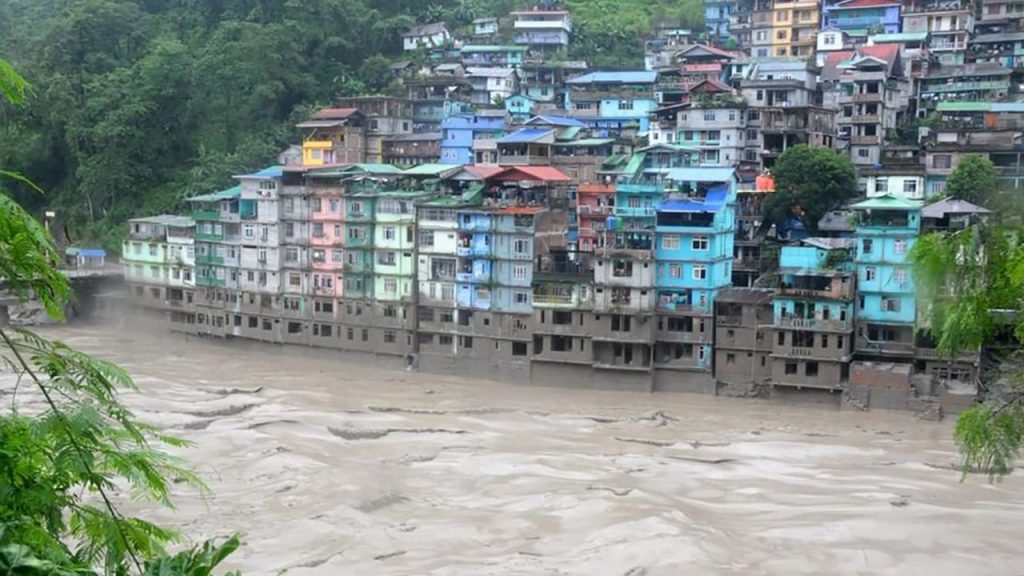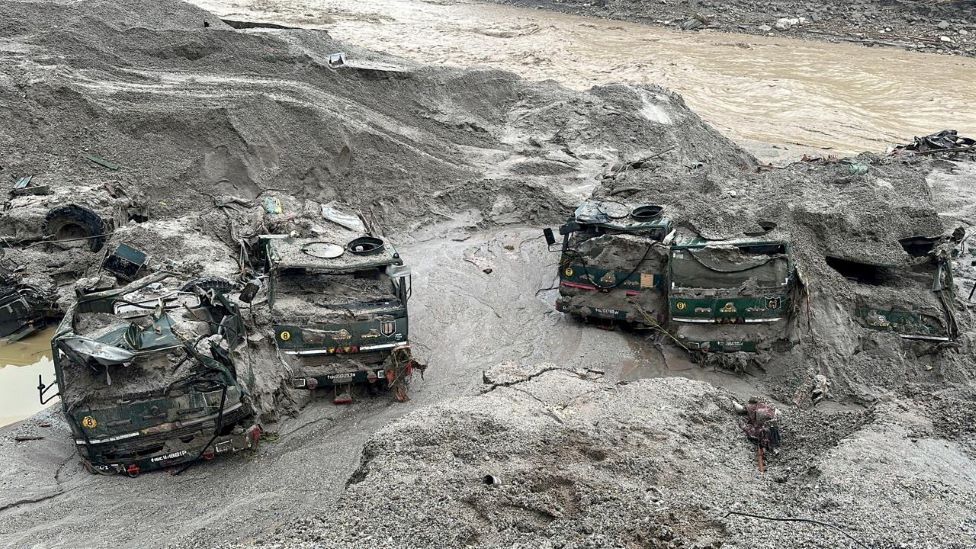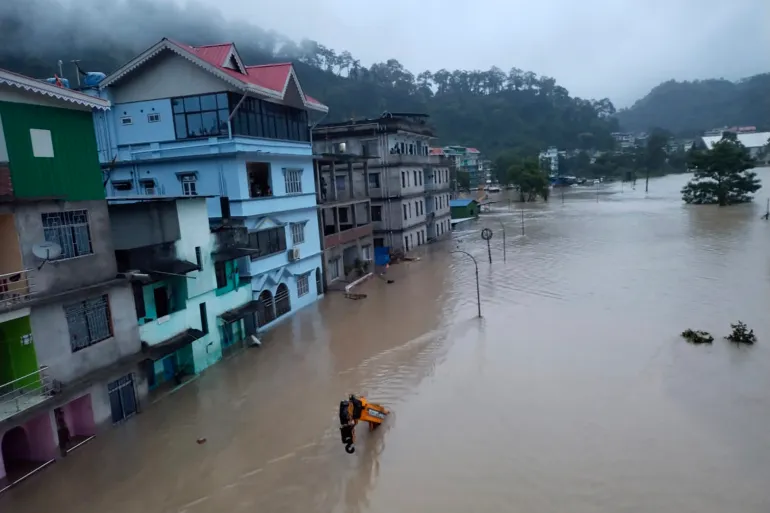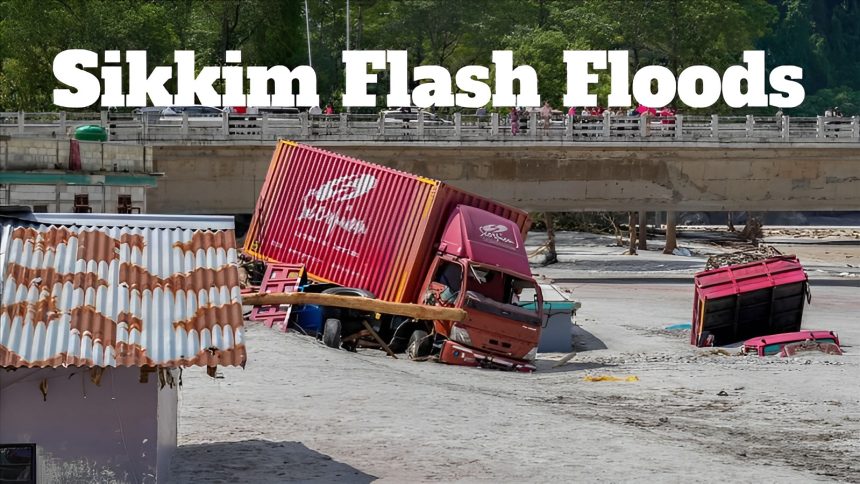4th October 2023 is the dark day for India’s northeastern state Sikkim. The Sikkim flash floods is a catastrophic event caused by a cloudburst over Lhonak Lake, leading to widespread devastation. The disaster has taken the lives of at least 53 individuals including 7 soldiers. The aftermath has been felt not only in Sikkim but also in neighboring state of West Bengal. Where 33 more bodies were discovered in the Teesta River bed over the past three days.

The scale of the disaster is huge with over 140 people still missing and thousands left homeless struggling to find shelter and safety. Official reports indicate that 1,173 houses have been severely damaged further intensifying the difficulty of the affected population.
One of the most pressing issues is the extensive damage to critical infrastructure, particularly the Teesta-V hydropower station. Which plays a vital role in the region’s power supply. The destruction of all bridges downstream has severed communication to North Sikkim isolating communities from essential services.
- Advertisement -

Government Response and Strategies
Sikkim Chief Minister, Prem Singh Tamang took swift action by chairing a high-level meeting to coordinate rescue, relief and restoration efforts. The government’s top priorities include restoring road connectivity to Chungthang and initiating the construction of a vital road from Naga to Toong subject to land availability. The government also promises compensation to the victims of the flash flood.
Despite the valiant efforts of rescue teams, the hostile weather conditions in Lachen and Lachung valleys have posed significant challenges. The Indian Air Force’s attempts to deploy Mi-17 helicopters for rescue operations have been hampered by low cloud cover and visibility further complicating the situation.
Causes and Preexisting Concerns: Sikkim Flash Floods
The Sikkim flash floods were due to the a glacial lake burst. A tragic event that exposes the vulnerability of Himalayan regions to such calamities. Prior warnings from a Parliamentary Committee about the scarcity of meteorological and monitoring stations in the Himalayan regions underscore the need for better preparedness.
Home Minister Amit Shah has authorized the release of ₹ 44.8 crore from the State Disaster Response Fund (SDRF). This was a move to lessen the suffering of the affected population. Additionally, an Inter-Ministerial Central Team (IMCT) has been deployed to evaluate the extent of damage and establish the necessary steps for recovery.

Chief Minister of Sikkim has highlighted the stark difference between the funds provided by the Central Government and the actual requirements to tackle this catastrophe. This disconnect emphasizes the urgency for comprehensive disaster management strategies and resource allocation in disaster prone regions.
The Sikkim flash floods serve as a grim reminder of the unpredictable nature of natural disasters. The critical importance of robust disaster preparedness. As communities grapple with the aftermath, it is imperative for authorities to learn from this tragedy. Also to invest in measures that can safeguard vulnerable regions from future calamities.


